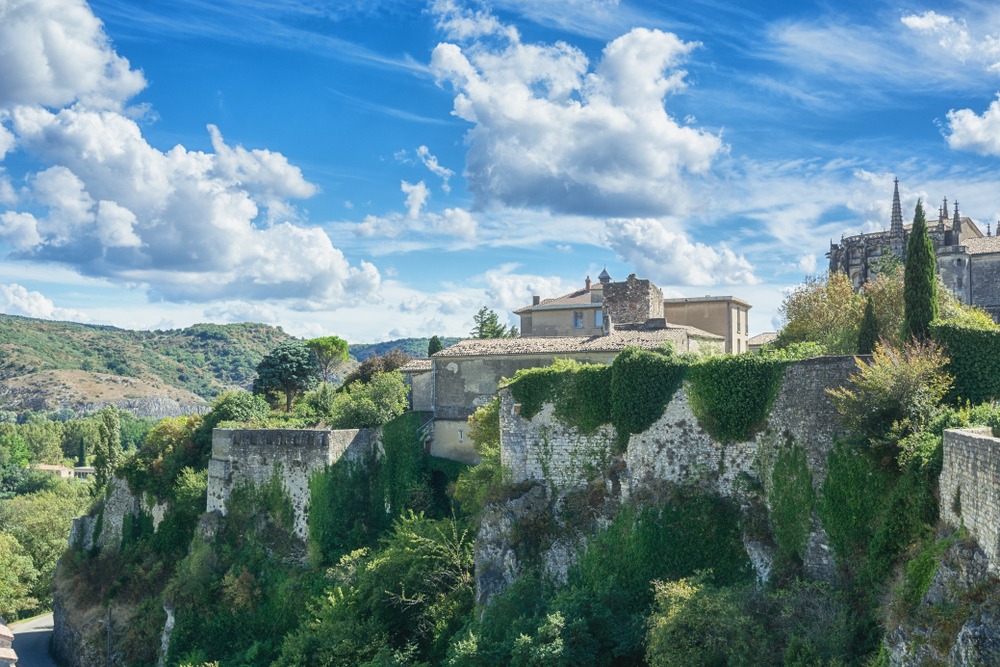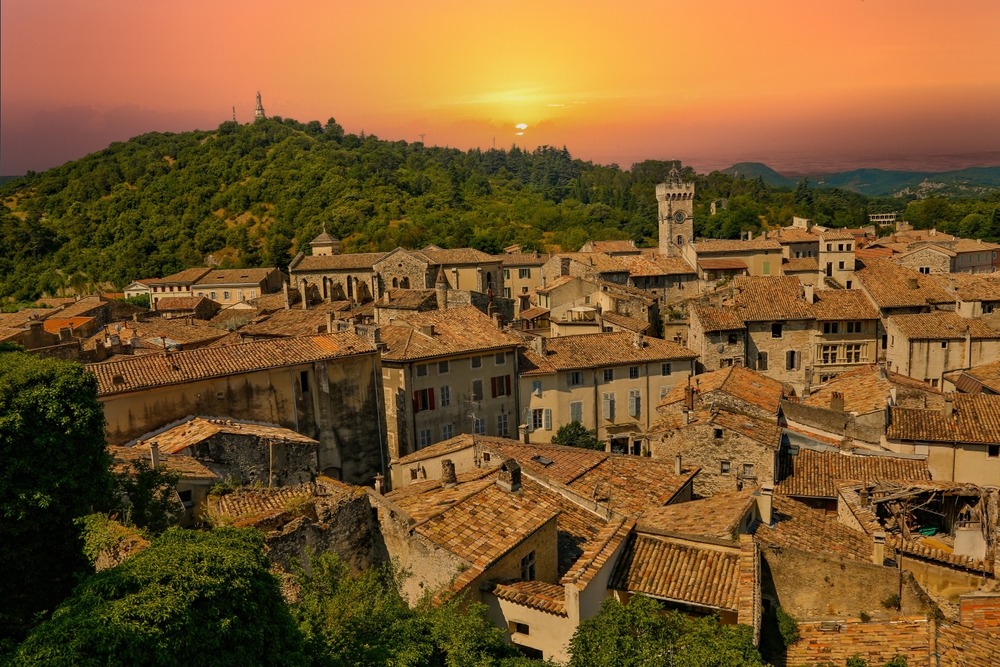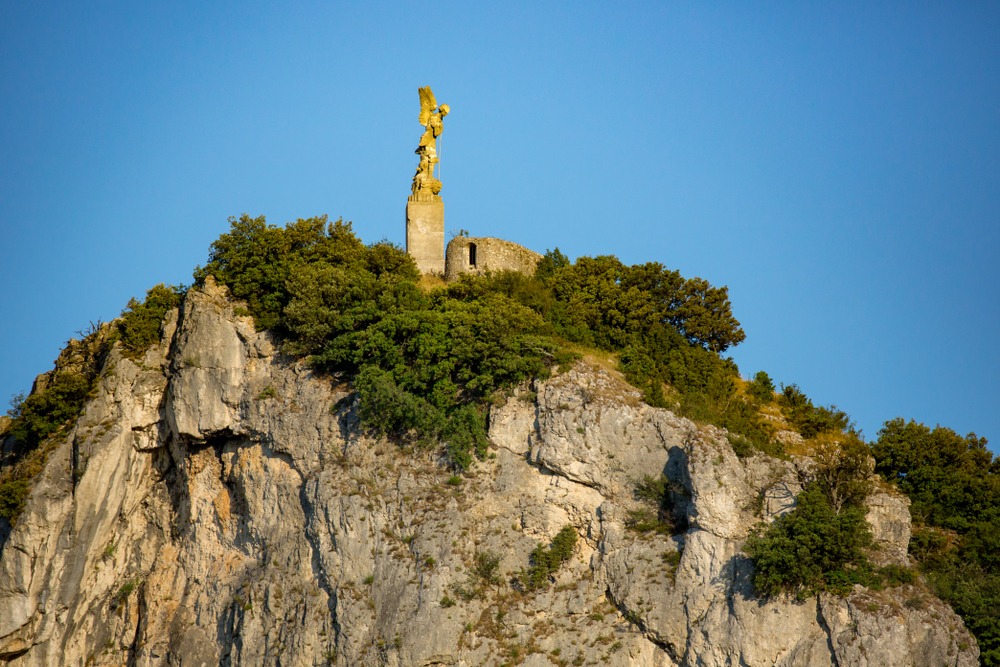Viviers, France: A Timeless Ecclesiastical Gem on the Rhône – History and Top 25 Attractions

A DETAILED HISTORY OF VIVIERS, FRANCE
Pre-Roman Roots and Celtic Heritage
Viviers, located in the Ardèche department in southeastern France, is perched above the Rhône River and boasts a history dating back to antiquity. The area was originally settled by the Helvii, a Gallic tribe that inhabited the region during the Iron Age. Evidence of pre-Roman dwellings and early agricultural activity has been uncovered in the surrounding hills.
Roman Era: A Town of Trade and Transition
In Roman times, Viviers was known as Vivarium, a settlement whose name likely derived from the Latin word for “fishpond” or “livestock enclosure.” Its position along the Rhône made it a convenient stop for traders and travelers moving between Lugdunum (Lyon) and the Mediterranean ports. Roman roads, coins, and pottery shards uncovered in the area suggest that Viviers played a supporting role in the broader regional economy of Gallia Narbonensis.
Early Christianity and Episcopal Ascendancy
Viviers’ greatest historical transformation occurred in the 5th century CE when it became the seat of a bishopric, replacing nearby Alba-la-Romaine. This elevation occurred as Christianity spread across Gaul, and bishops began assuming both spiritual and temporal power. From this time forward, Viviers would be dominated by ecclesiastical influence, with bishops effectively serving as rulers of the city for more than a millennium.
Medieval Era: A Fortified Ecclesiastical Stronghold
During the Middle Ages, Viviers grew into a fortified episcopal city. The bishops constructed protective walls and elevated their seat on the upper town, while tradesmen and artisans occupied the lower town along the Rhône. The city was shaped by the Romanesque and Gothic architectural styles, still visible today in its churches, walls, and narrow stone alleys.
Notably, the Cathedral of Saint Vincent was first constructed during this period, symbolizing Viviers’ role as a spiritual center. The bishops wielded extensive influence, overseeing courts, taxes, and military defense. Viviers became known not for its size, but for its religious and administrative authority in the Diocese of Viviers, one of the oldest dioceses in France.
Renaissance and Religious Turmoil
In the 16th century, the French Wars of Religion pitted Catholics against Huguenots (Protestants), and Viviers was no exception. The town changed hands multiple times and suffered damage to several ecclesiastical buildings. However, it maintained its religious identity and eventually reaffirmed its Catholic stronghold status after the Edict of Nantes in 1598.
Revolutionary Reforms and Decline in Power
The French Revolution marked the end of ecclesiastical rule. The bishop’s secular authority was dissolved, and church lands were nationalized. Though Viviers retained its religious heritage, it faded from national prominence. Its bishopric was later reinstated in the 19th century, though with diminished temporal power.
Modern Era: Preservation and Tourism
Viviers entered the 20th century as a quiet, preserved town. In recent decades, its intact medieval character and stunning views of the Rhône have attracted travelers seeking authentic French history. Today, Viviers is recognized for its rare architectural harmony and serves as a highlight for Rhône River cruises and historical tours.

TOP 25 ATTRACTIONS IN VIVIERS, FRANCE
1. Cathédrale Saint-Vincent de Viviers
France’s smallest active cathedral, this Romanesque-Gothic church dates to the 11th century. It features a beautifully carved 18th-century choir, baroque elements, and a commanding view from the upper town.
2. Episcopal Palace (Palais Épiscopal)
Attached to the cathedral, this former residence of the bishops of Viviers reflects centuries of religious and political power. Its grand architecture and terraced gardens overlook the Rhône Valley.
3. Old Town (Haute Ville)
A maze of cobbled alleys, stone staircases, and medieval houses. This preserved upper town offers an immersive glimpse into life in a fortified ecclesiastical city.
4. Maison des Chevaliers (House of the Knights)
A 16th-century Renaissance residence featuring an ornate façade with sculpted medallions. This former merchant’s house displays symbols of wealth and culture during the town’s mercantile height.
5. Town Walls and Towers
Portions of the original medieval ramparts and defensive towers still encircle the upper town. Walking along these walls provides a sense of Viviers’ strategic and spiritual importance.
6. Place de la Roubine
A charming public square in the lower town, surrounded by Renaissance and 18th-century buildings, it often hosts community events and offers a restful place to enjoy the ambiance.
7. Port de Viviers (Riverfront Promenade)
The Rhône-side promenade provides walking paths, picnic areas, and river views. It is also a stopping point for river cruise vessels that bring international visitors to the town.
8. Grand Rue
Viviers’ main historic street, lined with former mansions, boutiques, cafes, and artisan workshops. It connects the upper and lower towns and reflects the town’s former commercial significance.
9. Church of Saint Michel (Église Saint-Michel)
A smaller Romanesque church near the city walls, once part of a monastic complex. It’s a serene location and occasionally hosts chamber music performances.
10. Bishop’s Garden (Jardin de l’Évêché)
Terraced gardens offering panoramic views of the Rhône and Tournon hills beyond. Originally cultivated by bishops, the garden is now a public space blending greenery with heritage.
11. Rue des Chevaliers
A picturesque street in the upper town known for its Renaissance houses and iron-wrought balconies. One of the best places to observe medieval residential architecture.
12. Museum of Sacred Art (Musée d’Art Sacré)
Housed within the Cathedral precincts, this small museum exhibits religious relics, liturgical vestments, sacred art, and items from the diocese’s long ecclesiastical history.
13. Lavoir de Viviers (Public Washhouse)
A 19th-century communal wash basin used before modern plumbing. It provides a window into the town’s daily life and social customs of the past.
14. Hôtel de Roqueplane
An 18th-century mansion that now houses administrative offices. Its elegant façade is an example of the transition from medieval to classical French architecture.
15. Tour Saint-Michel
A surviving medieval tower that once guarded the town. Visitors can climb part of the way to enjoy expansive views of the Rhône plain.
16. Artisan Craft Workshops
Throughout the old town, visitors can find working artisans producing pottery, jewelry, and leather goods using traditional methods. Some offer short demonstrations or classes.
17. Les Calades
The sloped, cobblestone paths (called calades) of Viviers offer a unique walking experience. Their layout was designed to manage rainwater and foot traffic in the hilly terrain.
18. Ancient Roman Remains
Fragments of Roman walls and foundation stones can be seen in various parts of the lower town, remnants of Viviers’ ancient roots.
19. Maison du Notaire Royal
A historic residence once occupied by the royal notary in Viviers. It showcases legal authority and architectural refinement of the Ancien Régime.
20. Viewpoint from the Belvédère de l’Evêché
A high vantage point behind the Episcopal Palace with sweeping views of the Rhône, Mont Ventoux, and the distant Cévennes mountains.
21. Viviers Marina (Port de Plaisance)
A small river marina that serves pleasure boats and river cruisers. It’s a peaceful place to watch life on the Rhône or begin a kayak adventure.
22. Rue Montée du Château
An evocative, winding street lined with medieval houses and leading from the lower to the upper city. A walk here reveals architectural evolution over centuries.
23. Viviers Cultural Center (Maison de Pays)
This local center promotes Ardèche heritage and occasionally hosts art exhibits, film screenings, and small performances celebrating regional culture.
24. Market Day in Viviers
Held weekly, usually on Tuesday mornings, the open-air market offers fresh produce, cheese, baked goods, local wines, and handmade crafts, reflecting the best of rural Ardèche.
25. Walking Trail to Alba-la-Romaine
A scenic trail for hikers and cyclists that connects Viviers with nearby Alba-la-Romaine, another ancient Roman and medieval town, offering historical continuity and pastoral charm.

Viviers is a city of quiet elegance and rich spiritual heritage, where winding alleys and Renaissance façades whisper stories from centuries past. Though small in size, it is monumental in historical significance—as a former seat of ecclesiastical power, a medieval stronghold, and now a lovingly preserved gem on the Rhône. Whether marveling at the Cathedral of Saint Vincent, tracing Roman roots, or simply soaking in the views from its terraced gardens, Viviers offers travelers a journey through time in the heart of Provence’s untamed beauty.
































